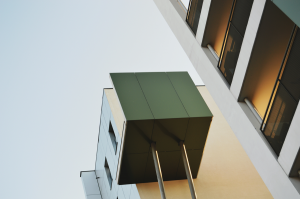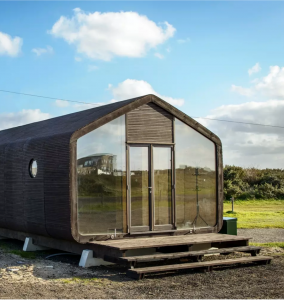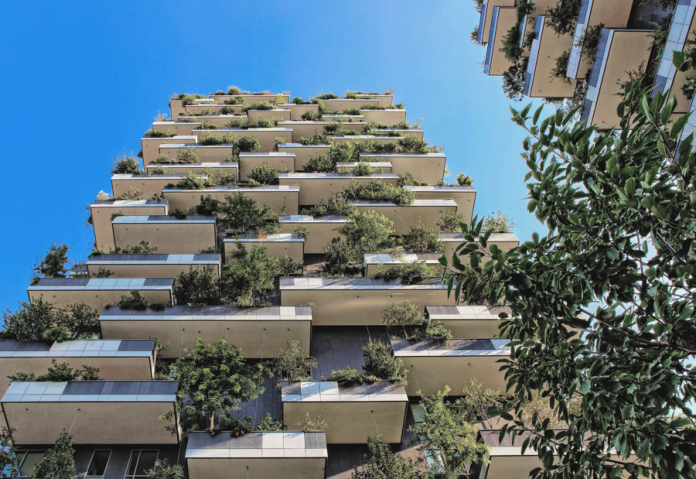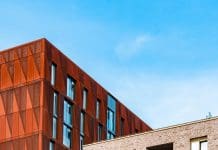Lauren Consiglio, freelance sustainable builds writer, explores three innovative building solutions that improve sustainability to create a greener way of building
Sustainability has become something of a buzzword in recent times, but there’s good reason for it. With more eco-related challenges than ever, it has become increasingly important to find ways to fight for a more sustainable future. And fortunately, from corporations to consumers, a shift in the way we see our planet means people are now taking greater steps to create a greener way of living for the good of the world.
We’re currently seeing this with the likes of recyclable materials, renewable energy and carbon emission reduction, but what exactly can the construction industry do?
With a chance to not only change the way people inhabit their homes today but to revolutionise the four walls that our future generations will live in, there is great pressure on the sector as a whole to positively transform the built landscape.
Craft and design expert Katie Treggiden and interior designer Tiffany Grant-Riley took us through some of the ways that construction could change through sustainable builds and gave us three ways that the industry can start innovating for more sustainable living.
Think spatially with houses that serve all people, not some people
1 in 200 people are currently homeless or living in inadequate homes and 46% of 25 to 34-year-olds are unable to get on the housing ladder. Kate predicts that this will soon become impossible to ignore, suggesting there will be more thought around the ‘tiny house movement’ as “more people move to cities where space is at a premium and young adults find innovative ways to own their own home.”
“I predict that in 100 years’ time the most significant change in architecture will be a shift in focus away from skyward gestures of ego, towards a more inclusive practice that finds lasting solutions.” She suggests that this will involve looking less at building solutions for the few, but instead at constructions that cater to those who need it most. Especially in megacities such as London, New York and Tokyo, this could provide a way to solve many housing-related issues.

Tiffany echoes this, suggesting that the scale of our homes could be set to see change. She tells of a recent example from The Living Unit London installation at London Design Festival in 2018, which showed the benefits that small-space living could bring: “Comprising of three stacked pods, [they] explored the future of mini living”. She goes on to say, “A somewhat stark example as a permanent solution, the pods had enough room for a kitchen, bathroom, bed and seating for two, accessed by a completely vertical ladder.”
Innovate with new materials that improve sustainability
Most material innovation going on in the industry is being driven by sustainability – and that is set to continue as it becomes increasingly important for consumers. Though Kate does not think these will be the highly imaginative changes people often envisage (think futuristic pods), there is a growing need for materials that can be re-used, recycled and re-grown, and many of these will be incorporated into future builds.
Fungal mycelium – This is a fast-growing, mouldable and entirely compostable material which is making its way to the forefront of eco-friendly living for its use in cladding, temporary structures and insulation. It is a mycelium brick formed through fungus that reduces the need for fossil fuels and is being praised for having super strength, while also being water, mould and fire resistant as well as grown to exact specifications.
Revisit old materials with more insight
With more experience and more insight into what constitutes sustainable builds, we are now finding new uses for old materials. One material that architects and builders are coming back to over and over again is cardboard – which, according to Kate, is attractive thanks to its “low cost, flexibility, strength, sustainability and recyclability.”

Kate goes on to explain that architects such as Shigeru Ban have been showing us this material’s potential since the 1990s, when he used it to build emergency shelters for Rwandan refugees, a schoolhouse in China and a concert hall in Italy among others. And most recently? A Dutch collective called Fiction Factory has “created cardboard ‘Wikkelhouses’ made from 24-layers of corrugated cardboard, which is glued together and then wrapped up in foil.”
Though the life expectancy of these houses is currently 50 years – which is far less than regular bricks and mortar – there is an increasing demand for more flexible and temporary dwellings that are eco-friendly. If this continues to be the case, it may increase the chances of cardboard becoming a practical option for houses.
These are only some of the ways that the construction industry can set its sights on sustainability – but they nonetheless show how the need for “greener living” is continuing to grow. With over three-quarters of Brits now considering the eco-consciousness of their building when choosing a new home, businesses have the chance to bring new innovations to the market to satisfy the swiftly increasing demand.
Lauren Consiglio
Rajapack: Living In The Future














